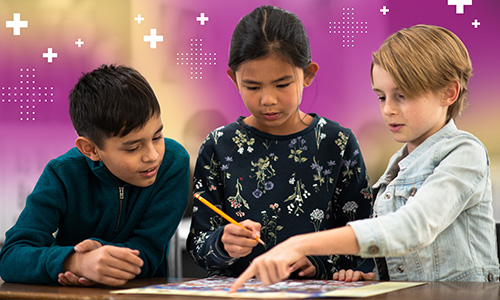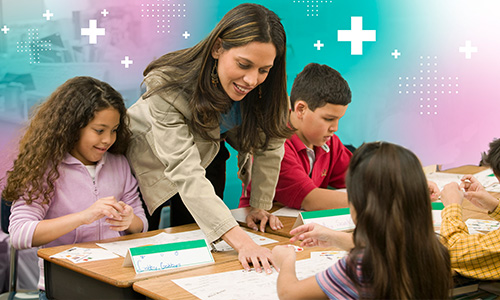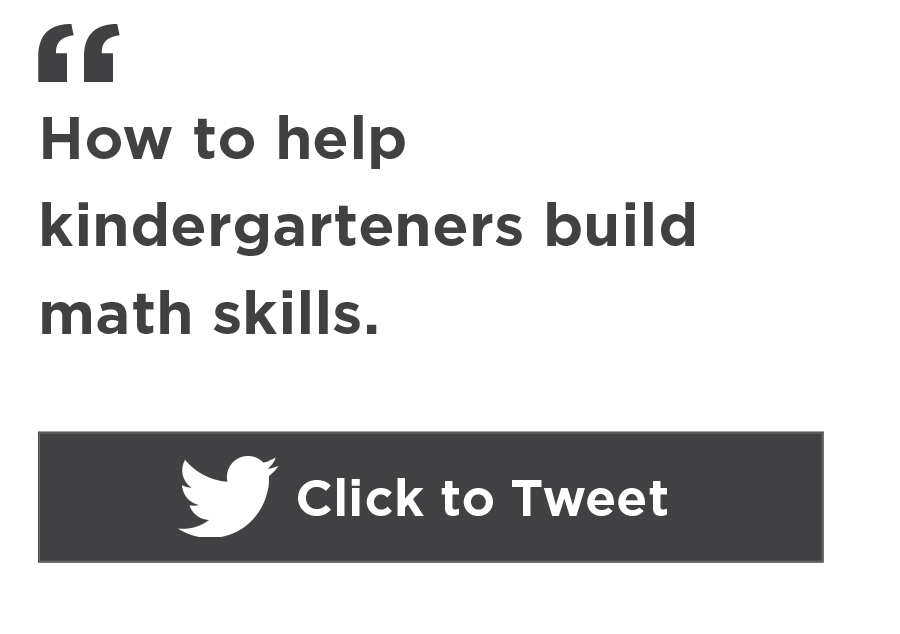As we enter an unpredictable back-to-school season, educators and administrators are hitting the ground running to prepare students for our new normal amid COVID-19. While many students received distance learning last spring, the extent to which they did is unknown. This is especially true for our youngest students: preschoolers who are now entering their first year of traditional school as kindergarteners. Meanwhile, coronavirus continues to reshape traditional schooling.
Even under normal circumstances, we know there are often big gaps in the skills students bring with them to kindergarten. Understanding the differences in skills students enter school with during a standard school year provides an important baseline for interpreting the unique circumstances of the 2020–21 school year.
To better understand what educators are up against this fall, my colleagues and I have started to investigate what math skills we typically see in kindergartners when they first start school. We’re examining data on how past kindergarteners performed on their fall MAP® Growth™ K–2 mathematics test and which types of questions they consistently answered correctly. Additionally, we’re organizing data into three groups: bottom 25th percentile, 25th–90th percentile, and top 10th percentile. Here is a summary of what we’ve found so far.
Pattern #1: Spatial language and math vocabulary are strongest for high-performing students
Students in the top 10th percentile are able to accurately answer the most questions with spatial language and math vocabulary that directs them to compare.
Spatial language—specifically prepositions such as “below,” “above,” and “next to”—helps communicate mathematical thinking. Data shows higher-performing students have a greater breadth of knowledge with comparing words. For example, students in the bottom 25th percentile tend only to answer questions with the comparing words “more” or “less,” while higher-performing students succeed with questions using additional comparing words and phrases, including, “less than,” “least,” “greater,” and “greater than.”
Pattern #2: Spatial skills sometimes need a boost
Understanding prepositional phrases is an example of a spatial skill, but we also look for the ability to do things like apply geometric concepts in the real world by identifying shapes and taking apart polygons. Students in the mid and top percentiles tend to answer more questions correctly about identifying and describing two-dimensional and three-dimensional shapes, varying sizes of shapes, and orientation of shapes within the environment.
Pattern #3: Counting and cardinality complexity is difficult for students in the bottom 25th percentile
The majority of students correctly answer questions with average language concepts, “same” and “different” language, and a call to orally count to 10. But similar to what we saw in students’ use of comparing language, mid- and high-performing students are better able to correctly answer more complex questions, such as those with one-to-one correspondence, requiring the ability to count beyond 20, and asking them to begin adding objects with sums of 10.
Pattern #4: Operations and algebraic thinking is missing for students in the bottom 25th percentile
Students who are lower-performing at kindergarten entry are not accurately answering questions about operations or algebraic thinking, and the goal area is completely missing from the data we’ve gathered for that group. However, we see mid- or high-performing students who are accurately answering questions around counting and geometry doing well with foundational questions about operations and algebraic thinking.
Pattern #5: Measurement and data skills are the same for all groups
We did not see many differences in the ability to work with measurement or data between the three groups.
Student strengths by group
To help you better understand what your students will be ready for this fall, the following tables provide a snapshot of strengths by grouping.
Students who performed mid-range had all the strengths of students in the 25th percentile plus the following.
Most students performing in the top 10% of the score distribution had all the strengths of the other students plus the following.
Activities to support all students
Here are four things you can do to support your kindergarteners this fall:
- Work spatial language into your math, reading, and language arts centers. Incorporate hands-on activities that encourage spatial language, such as building houses using triangles and squares, then placing trees “between” them. Or have students use various shapes to create a scene and have them describe their scene using spatial language (e.g., “between,” “next to,” “across”) or comparing vocabulary (e.g., Marcus’s tree has “fewer” apples than mine).
- Develop spatial skills. A fun way to incorporate more spatial skills is building Lego sets. This can support and develop spatial reasoning while reinforcing spatial language and math vocabulary. Additionally, don’t shy away from technology. There are some pretty slick geometry apps available.
- Focus on more difficult counting and cardinality skills. For students performing below the 25th percentile, activities around subitizing, which is the ability to recognize how many items are in a small set, are key. For example, students could practice recognizing the number of dots that appear on dice. Start small and count objects to five, then build up gradually, eventually adding the numerals 1, 2, 3, 4, and 5 to the amount represented.
- Build a foundation for operations and algebraic thinking. Based on what we are seeing, young learners must have a foundation in counting, cardinality, and geometry to build up to operations and algebraic thinking. Once students get there, encourage growth. Continuous efforts with patterns and sequencing skills in activities such as puzzles, board games, or cards are sure to pay off.
As kindergartners begin their schooling either remotely or in the classroom, the importance of recognizing what they know and understand in math is essential. As the information here shows, there is a large difference in not only numeracy skills but spatial language and skills as early as fall of kindergarten. With this information, we hope it will be easier to build foundational skills with students so they can become successful and grow in mathematics.












